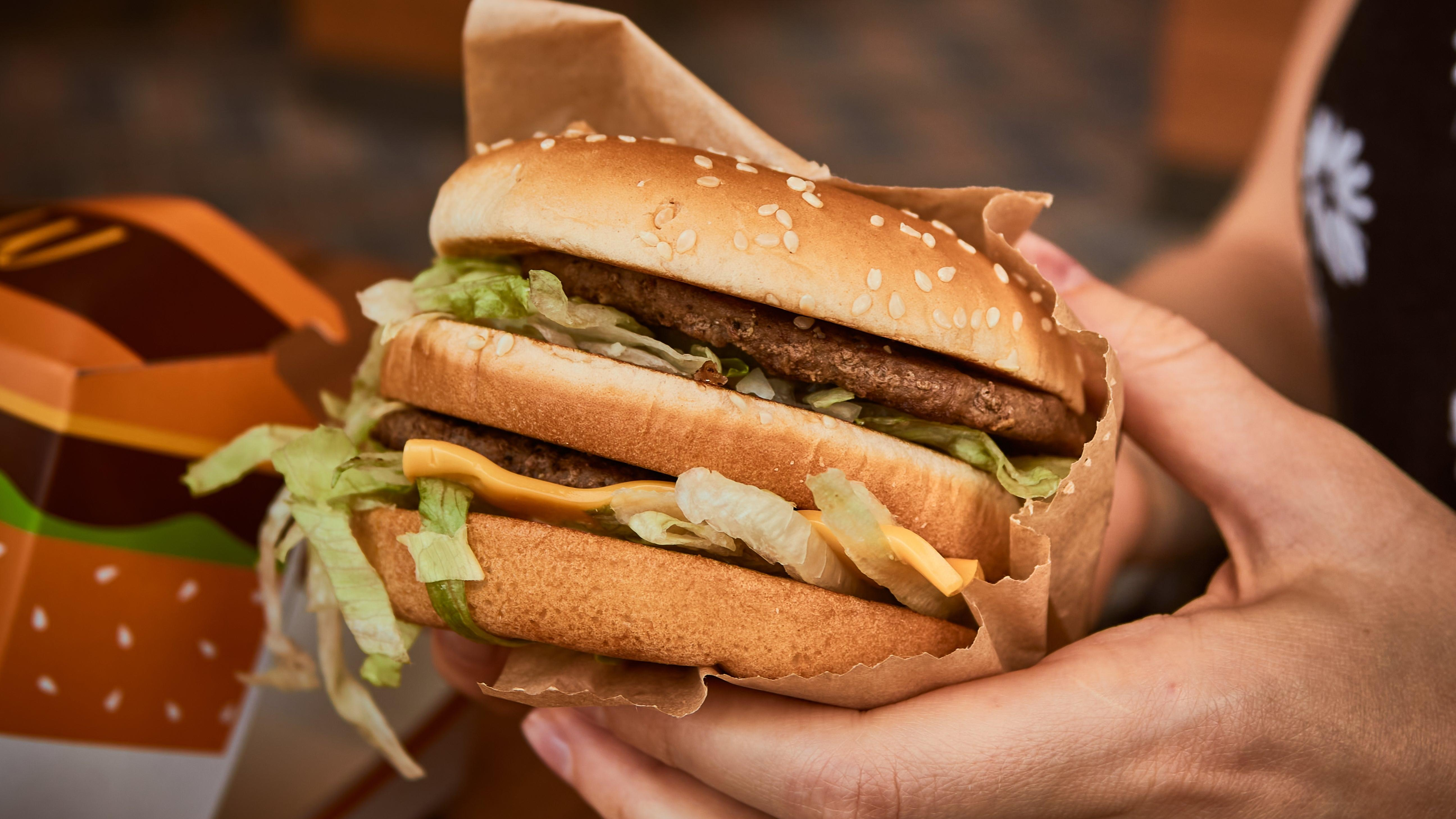The Behind-The-Scenes Changes Coming To McDonald's Burgers
McDonald's has made over 50 changes to the way it makes its Big Mac and Quarter Pounder.
If you've ever lamented the fact that your Big Mac was dry, or the cheese wasn't melted, or the lettuce was beyond wilted, well, McDonald's has been keeping track of these issues, too. I've long since ditched Big Macs in favor of the Quarter Pounder, which improved greatly when the company switched over to fresh beef in 2018. But now, it's time for the Big Mac to get a similar makeover.
While the burger itself will still look like the one you know—two burger patties, a slice of cheese, lettuce, onion, pickles, and special sauce, all on a sesame seed bun—McDonald's has allegedly made over 50 tweaks to its Big Mac process, hoping to improve the overall experience of eating one. And if it sticks the landing, maybe the Big Mac will win some of us back.
The subtle differences in McDonald’s burgers
Many of the changes coming to the burgers have little to do with the ingredients used; instead, they're operational, enacted behind the scenes. Still, there's a chance you'll notice them if you haven't already.
One change is the addition of more Big Mac sauce, upping the application from 0.3 oz. to 0.5 oz. to ensure the burger doesn't come across as dry. This will surely result in a slightly messier burger, but the extra flavor is worth it—just ask Dax Shepard. Onions are sprinkled on the meat while the patties cook on the grill, rather than being sprinkled on afterward. Even the bun has changed: The new brioche buns are cut thicker on the bottom to better retain the heat of the overall burger. These changes in preparation extend to McDonald's single and double cheeseburgers as well.
Operationally, McDonald's will also be cooking fewer patties at one time. The restaurant used to cook them eight to a batch, but that number has been reduced to six patties, which improves efficiency and freshness. There have also been adjustments made to the clamshell grill, which cooks both the top and bottom of the patty; the idea is to press down on the meat less, because this squeezing can wring out the moisture from the beef.
The cheese is now placed atop the burgers at room temperature, ensuring a proper melt, as opposed to being added from the cooler, which sometimes results in those stiff slices that don't quite drape over the meat as they should. And in a beautifully simple adjustment, both the lettuce and pickles are now stored in smaller containers on the line, which means kitchen workers refresh them more frequently with fresher stock from the cooler.
It's hard to think of an element of McDonald's burgers that hasn't somehow been adjusted or overhauled. For the toasted buns, franchisees are even being instructed to clean their toasters daily in order to ensure that each burger bun gets to the right shade of golden brown.
Where to taste McDonald’s new and improved burgers
These changes have already been tested and implemented fully in Australia, and McDonald's is planning to finish the rollout across the U.S. by early 2024. West Coast and Midwestern stores have already seen these changes. California-based Takeout contributor Danny Palumbo has found that the menu tweaks really have made a noticeable difference in both the Big Mac and the Double Cheeseburger. Here in Chicago, I can attest that the Big Mac's bun is now shinier and puffier, and the extra sauce does make an enjoyable difference.
Right now burger competition has never been more stiff. Red Robin is upping its game with a new brioche bun and a new grilling process; Burger King is refocusing on its Whopper; Smashburger is introducing inventive specials; and Shake Shack has dropped some recent bangers too. Will focusing on the fundamentals lead to a surge in Big Mac and Quarter Pounder sales? McDonald's is betting big on it.
